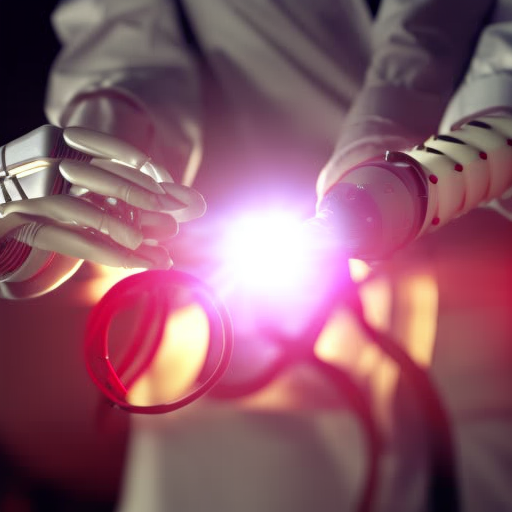Summary: Medical robots are advanced machines that are designed to assist healthcare professionals in various medical procedures. These robots can perform tasks such as surgery, rehabilitation, and diagnostics, improving the accuracy and efficiency of medical treatments. They have the potential to revolutionize healthcare by reducing human error, increasing precision, and expanding access to medical services.
Types of Medical Robots
- Surgical Robots: These robots are used in surgical procedures to assist surgeons in performing precise and minimally invasive surgeries. They can be controlled by the surgeon or operate autonomously using pre-programmed instructions.
- Rehabilitation Robots: These robots are used in physical therapy to assist patients in regaining their mobility and strength. They can provide repetitive and controlled movements to help patients recover from injuries or neurological conditions.
- Diagnostic Robots: These robots are used in medical imaging and diagnostics to assist in the detection and diagnosis of diseases. They can analyze medical images, perform tests, and provide accurate and timely results.
- Telepresence Robots: These robots enable remote medical consultations and surgeries. They allow doctors to interact with patients and perform surgeries from a different location, expanding access to specialized medical care.
Advantages of Medical Robots
- Precision: Medical robots can perform tasks with a higher level of precision than human hands, reducing the risk of errors during surgeries and other medical procedures.
- Minimally Invasive Procedures: Surgical robots enable minimally invasive procedures, which result in smaller incisions, less pain, and faster recovery times for patients.
- Improved Outcomes: The use of medical robots has been shown to improve surgical outcomes, reduce complications, and enhance patient recovery rates.
- Reduced Human Error: Robots can eliminate or minimize human errors caused by fatigue, tremors, or distractions, leading to safer and more reliable medical procedures.
- Remote Access to Medical Care: Telepresence robots allow doctors to provide medical consultations and perform surgeries remotely, enabling access to specialized care in remote or underserved areas.
Challenges and Limitations
- Cost: Medical robots can be expensive to acquire and maintain, limiting their widespread adoption in healthcare facilities.
- Training: Healthcare professionals need specialized training to operate and utilize medical robots effectively.
- Regulatory Approval: The development and deployment of medical robots require regulatory approval to ensure patient safety and efficacy.
- Ethical Considerations: The use of robots in healthcare raises ethical questions regarding patient autonomy, privacy, and the potential for dehumanization of medical care.
- Integration with Existing Systems: Integrating medical robots into existing healthcare systems can be challenging, requiring compatibility with electronic health records and other medical technologies.
The Future of Medical Robots
Medical robots are continuously evolving and advancing in their capabilities. Future developments in medical robotics include:
- Nanorobots: These tiny robots could be used for targeted drug delivery, minimally invasive surgeries, and precise diagnostics at the cellular level.
- Artificial Intelligence (AI) Integration: AI algorithms can enhance the capabilities of medical robots by enabling them to learn from data, make autonomous decisions, and adapt to different situations.
- Robot-Assisted Rehabilitation: Further advancements in rehabilitation robots can help patients recover from strokes, spinal cord injuries, and other neurological conditions more effectively.
- Collaborative Robots: Robots that can work alongside healthcare professionals, assisting them in tasks such as lifting patients, preparing medications, and monitoring vital signs.
In conclusion, medical robots have the potential to revolutionize healthcare by improving precision, reducing human error, and expanding access to medical services. While there are challenges and limitations to overcome, ongoing advancements in technology and research will continue to enhance the capabilities of medical robots, leading to improved patient outcomes and a more efficient healthcare system.












